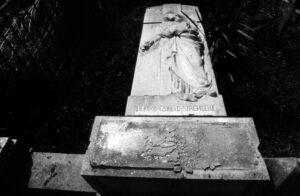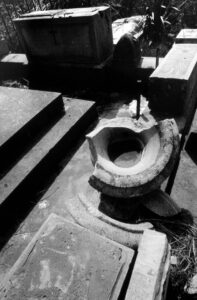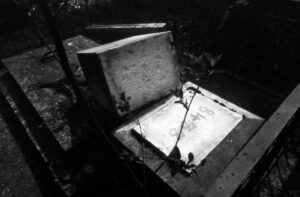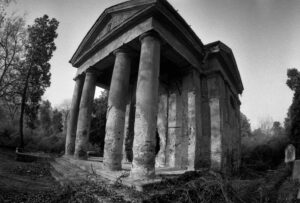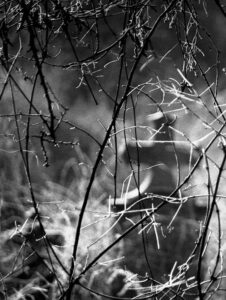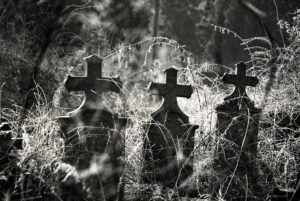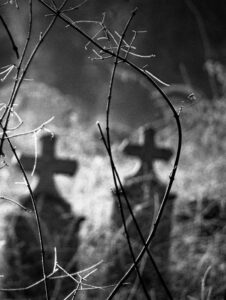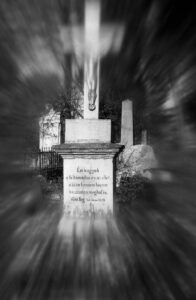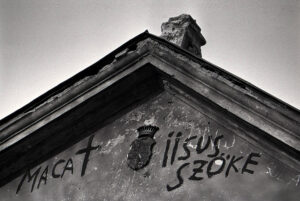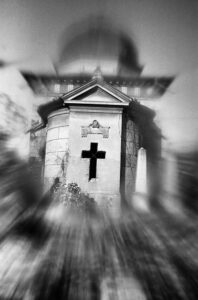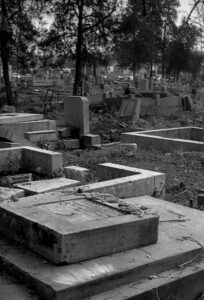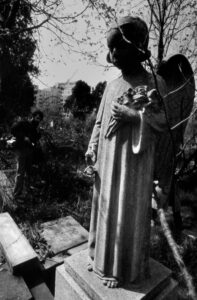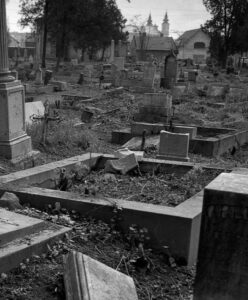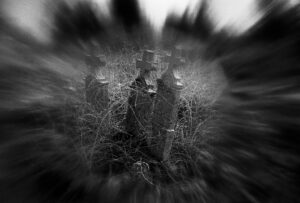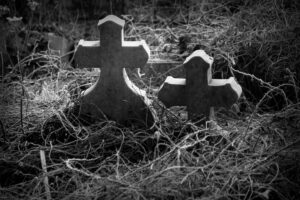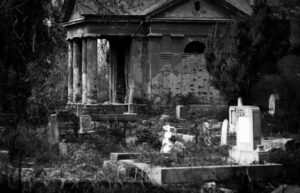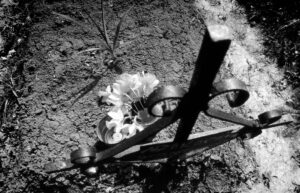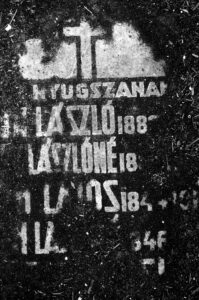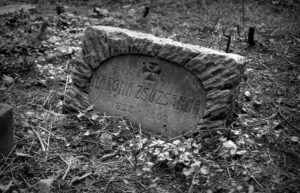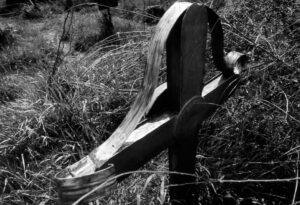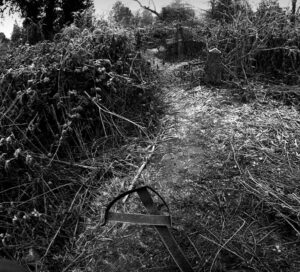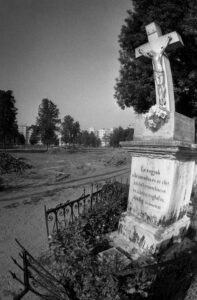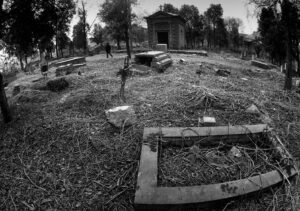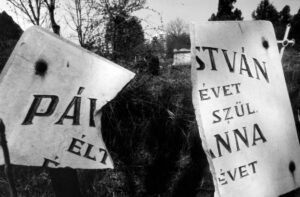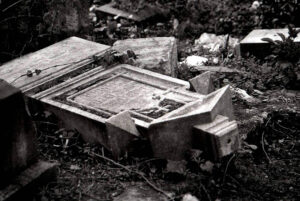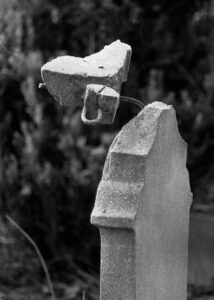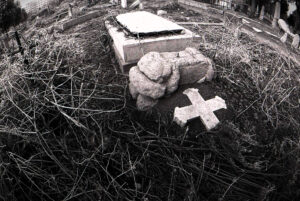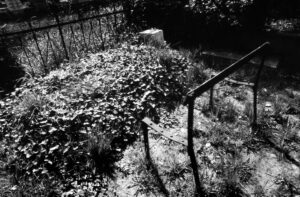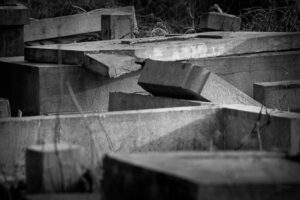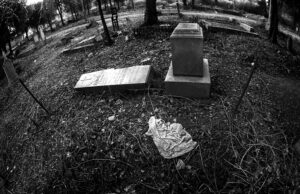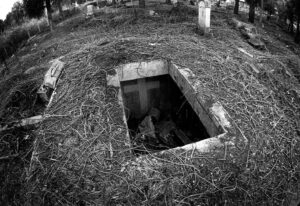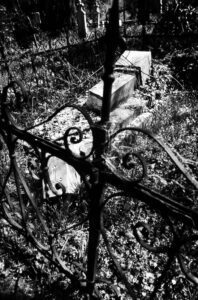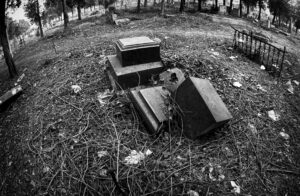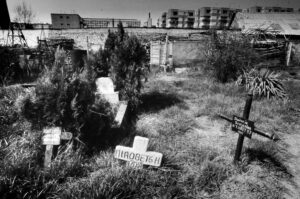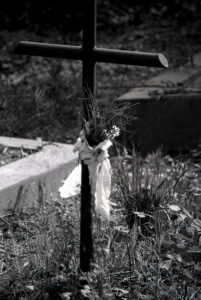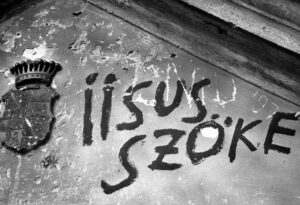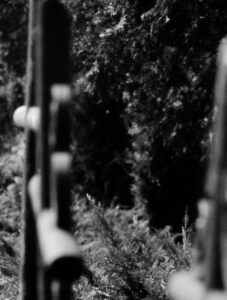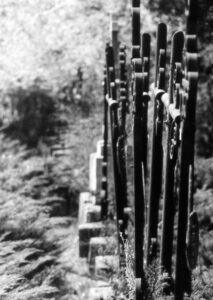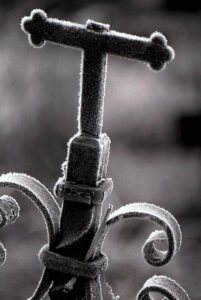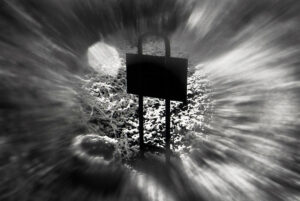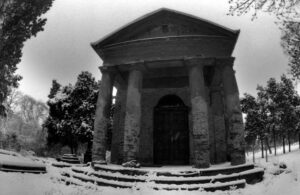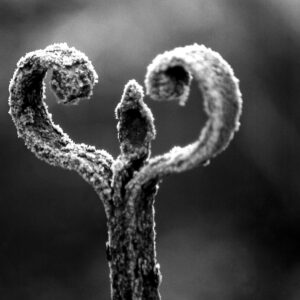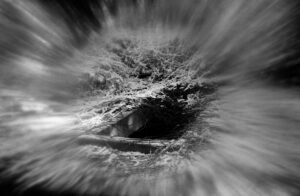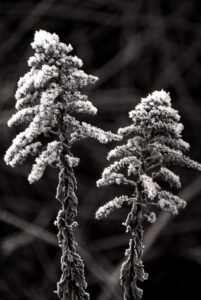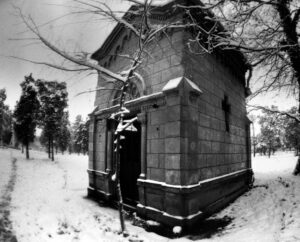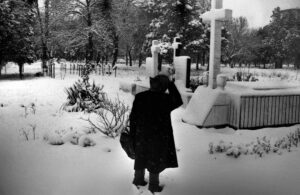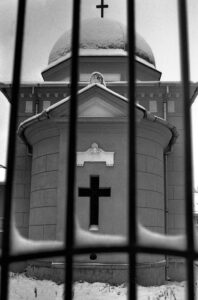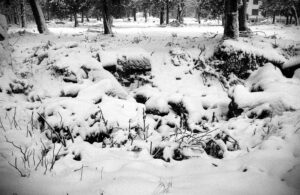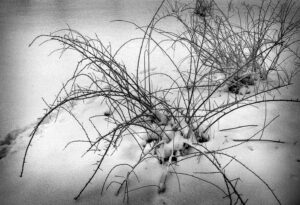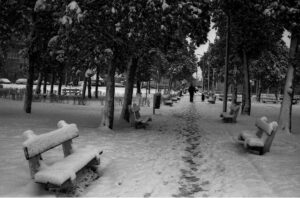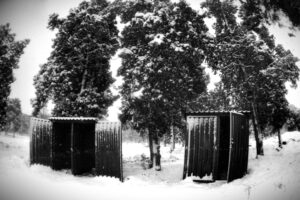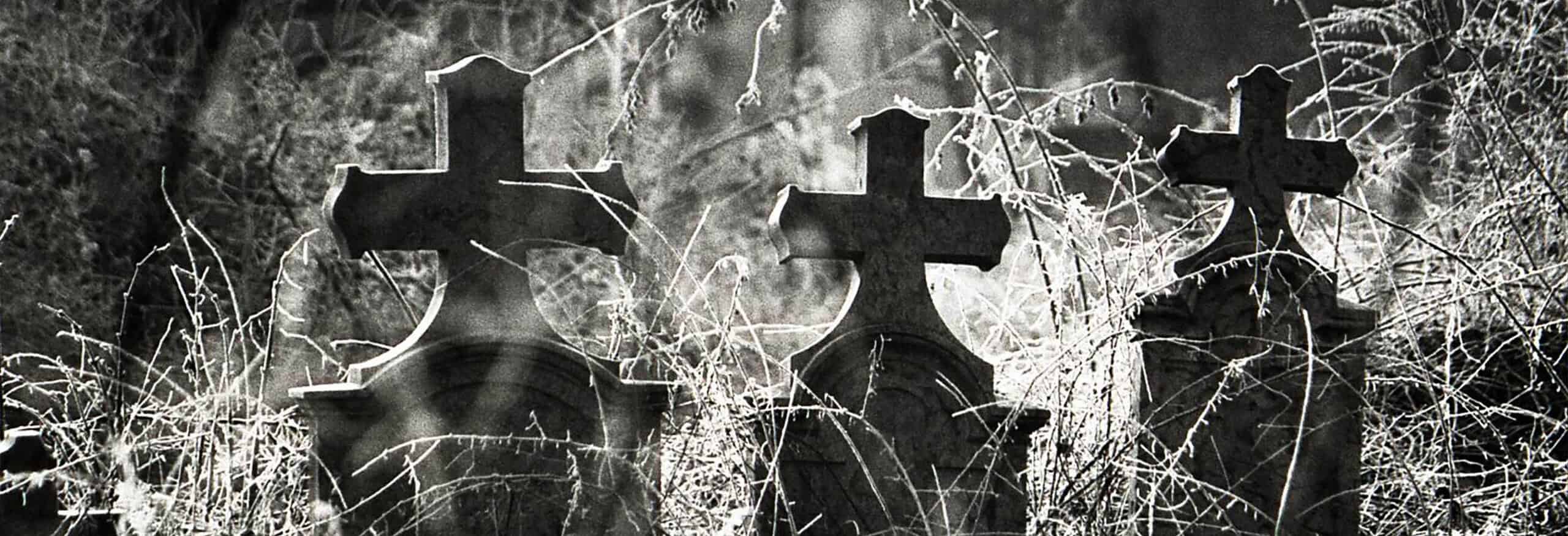Beyond the Boundary of Death
For more than 25 years, the photo artist Ștefan Tóth has witnessed, as we all did, the slow death of a final resting place. But because of his unflinching perseverance, he could not resign to be a mere witness. Instead, he recorded photographically the stages of this spectacular – from an artistic point of view – process of extinction.
The exhibition which resulted after selecting through a long series of photographs has made Ştefan Toth a testifier, a troubling voice that speaks to us not only about a phenomenon or an attitude, be it of revolt or resignation, of profanation or oblivion, of indifference, violence or shamelessness. This exhibition tells us about the human condition in itself. About the overwhelming impact between the world of the living and the world of the dead. About the sacredness of a place that could withstand no more the assault of contemporary urban life, a sacredness which became uncomfortable and use- less, and was reduced to the state of the profane: an urban lot that was administered accordingly. The dead encumber us more and more, especially those who belong to no one, the dead whose funerary monuments are no longer the pride of the living. Because – isn’t that so? – the contemporary cemetery has also become a place for competition, a vanity fair ruled only by blatant conceit and an unlimited tastelessness. “The final resting place” has also become a relative notion, its finality meaning nowadays just a few decades.
In that context, what do the photographs of Ştefan Tóth from the exhibition “Death of a Cem- etery” tell us? They can tell us about the age old story of indifference and turning away from God, about greed, hatred, decay, despair, physical emptiness and moral emptiness. The graveyards are open like gates of Hell, like chasms of a seemingly God forsaken world. The photographer’s sensitivity was most disturbed by the brazen lack of respect for everything that is past, ancestors, roots and models. The hypocrisy and cowardice of pretending not to see, of washing one’s hands with the nonchalance of Pontius Pilate, of witnessing with indifference the death of an old world which had a coherent scale of values and an exemplary artistic taste. Just like the vernacular architecture, which gives the unique charm of a city, cemeteries can be considered as sculptural settings that talk not of the way of living of a society, but of its way of dying, of withdrawing with dignity, even elegance, from the show of life. The Olosig Cemetery was one of those places where, in solitude, one could meditate about the transience and fragility of human life, about the deep hope of all the “weary and heavy laden” called by His voice. It was a place where the voice of Nature let the inner voice of that meditation be heard. I saw in many places cemeteries which were also parks of a rare beauty, of a melancholy elegance, unique because of the simplicity and nobleness with which it conveyed in an artistic language the disquieting message: “Memento mori”.
The Olosig Cemetery is no more. The profaners and the bull dozers have accomplished their mission. It is still alive only in heaven, in our shorter and shorter memory, in books and in the pho- tographic art of Ştefan Tóth. Watching its images in the rhythm of the seasons’ passage, through the prism of the poetry of light, of the visual tunnels through which our sight dives towards the symbols of death and resurrection, we have an ever clear conviction that art can transfigure everything, that it can give a spiritual meaning even to places which seem to be forsaken, temporarily, by the grace of God. These are black and white photographs, images of a tender plasticity, which oscillate between delicate iridescences of twilights and graphics burdened by tenebrous blacks.
The silence of the graves is even deeper now, buried among the noises and commotions of the city, but the voice of Ştefan Tóth’s photographs is strong and clear. Through the magic of the metaphor, these photographs restore to a sacred place the meaning it was originally given, that of reminding us of the fundamental triad of existence: Life – Death – Resurrection.
dr. Ramona Novicov
– Art Critic –
Exhibited photos

